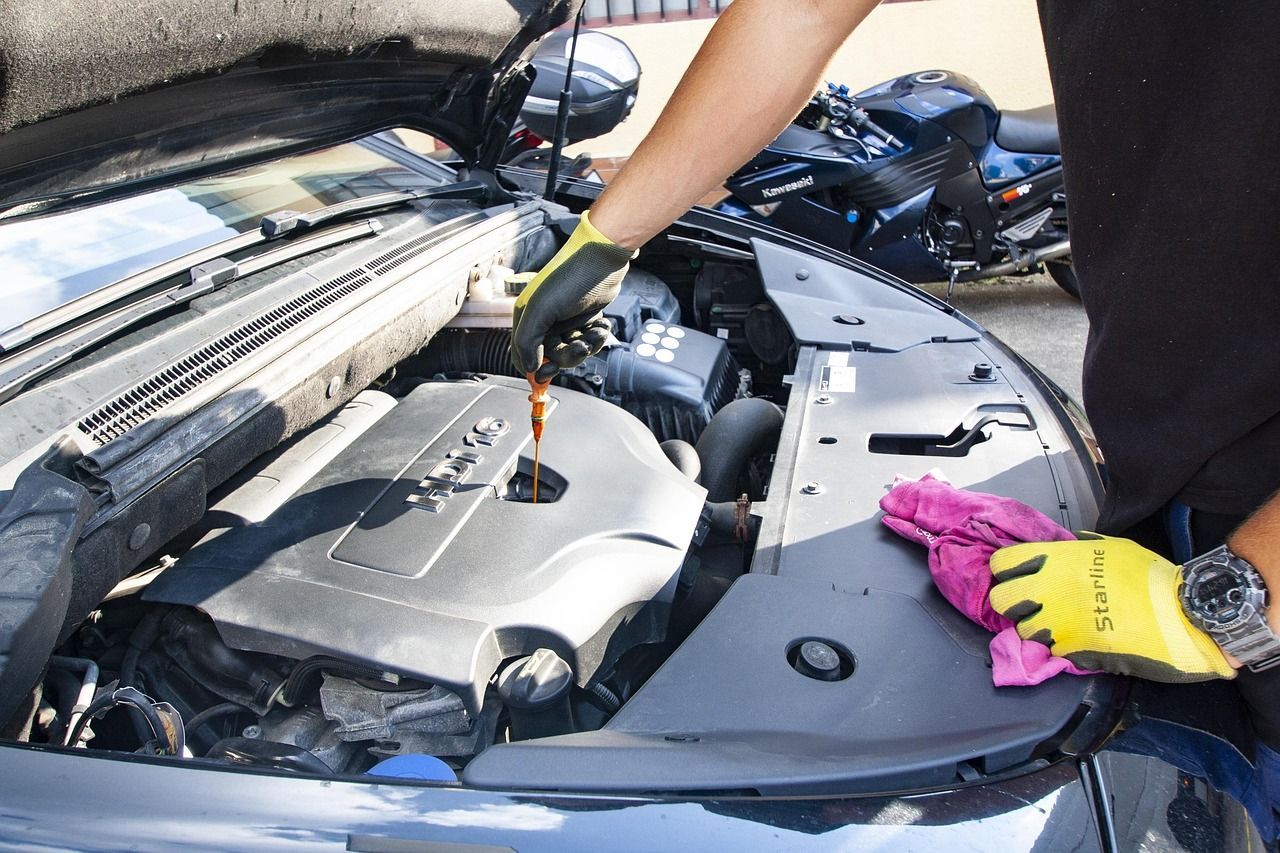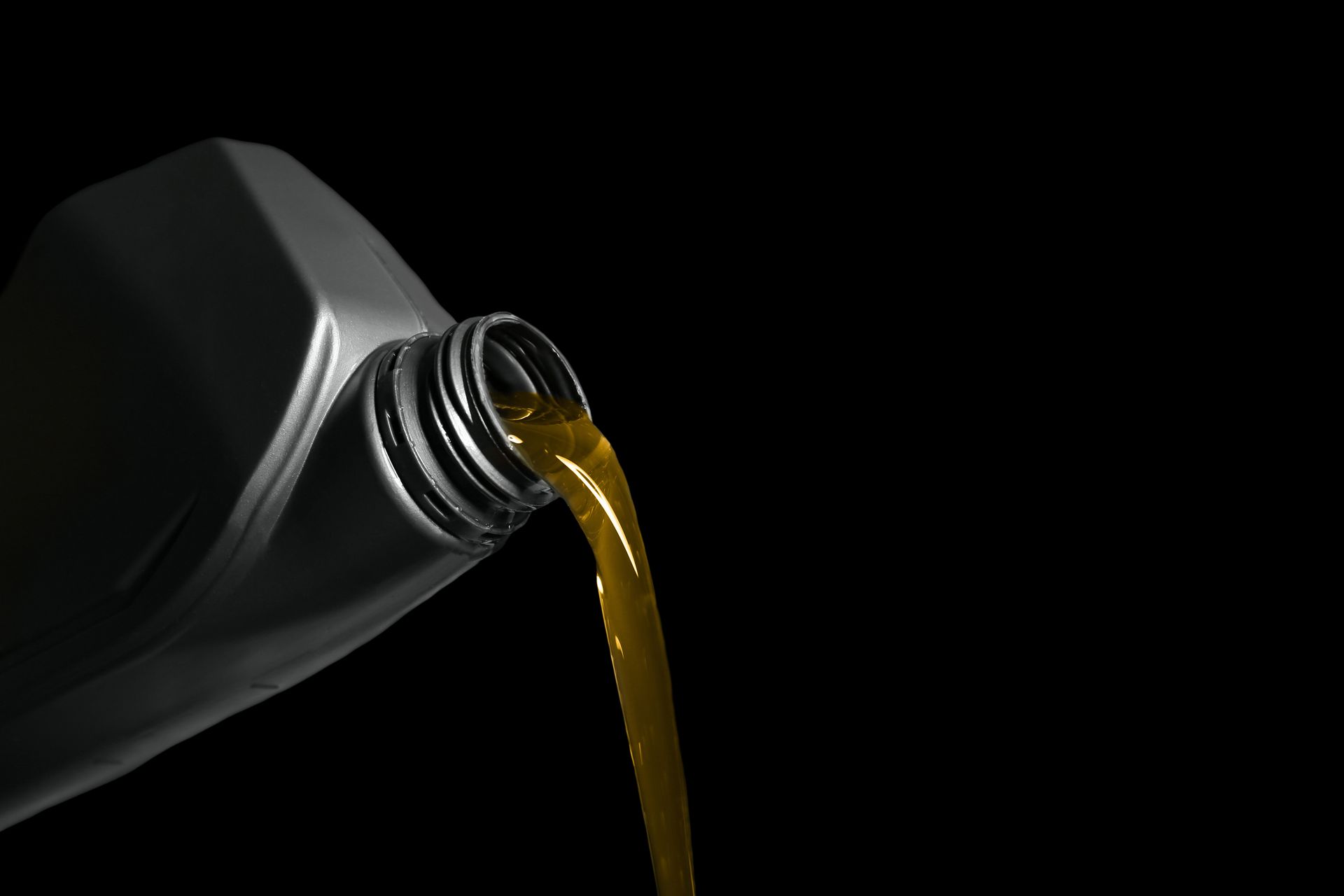Synthetic Oil Change vs. Synthetic Blend Oil Change: What You Need to Know
When it’s time for an oil change, you might think the hardest decision is whether to grab a coffee while you wait. But then you get hit with the big question:
“Do you want a full synthetic or a synthetic blend oil change?”
Cue the awkward pause.
If you’ve ever wondered what the difference is (and which one your car actually needs), you’re in the right place. Let’s break down the synthetic oil change vs. synthetic blend oil change in a way that makes sense, saves you stress, and maybe even gets you to crack a smile.
What is a Synthetic Oil Change?
Premium Protection for Your Engine
A synthetic oil change uses 100% chemically engineered oil. It’s designed in a lab to offer the best possible performance and engine protection, far better than conventional oils.
Benefits of a Synthetic Oil Change:
- Handles Extreme Temperatures: Perfect for Mesa’s summer heat and those cold morning starts.
- Keeps Your Engine Clean: Fewer impurities mean less sludge and gunk buildup.
- Longer Intervals Between Changes: You can typically go 7,500 to 10,000 miles before your next oil change.
- Improves Fuel Efficiency: Less friction means better gas mileage over time.
- Quieter, Smoother Engine: Your engine will literally run smoother and often sound better.
Things to Consider:
- Costs More Upfront: Synthetic oil changes are more expensive than blends but can pay off in the long run.
- May Not Be Needed for Older Cars: If your car’s older or has high mileage, you might not need full synthetic unless recommended.
For instance, if one of your drivers frequently idles for extended periods during deliveries, that adds up. An hour of idling can consume as much as a gallon of fuel. Multiply that across your entire fleet, and the wasted costs become significant. Data-backed decisions can help reduce these inefficiencies.
What is a Synthetic Blend Oil Change?
Balanced Performance Without Breaking the Bank
A synthetic blend oil change combines synthetic oil with conventional oil. It gives you some of the perks of full synthetic oil without the premium price tag.
Benefits of a Synthetic Blend Oil Change:
- More Affordable: A great middle-ground if you want solid protection at a lower cost.
- Better Than Conventional: Blends last longer and perform better than regular oil.
- Good for Moderate Driving: Perfect if you’re not constantly towing, racing, or stuck in traffic jams.
- Handles Temperature Changes Well: Blends still offer solid protection against heat and cold.
- Change Every 5,000 to 7,500 Miles: Shorter intervals than full synthetic, but still better than conventional oil.
Things to Consider:
- Needs More Frequent Oil Changes: You’ll need to change your oil sooner than with full synthetic.
- Less Engine Cleaning Power: Blends fight sludge, but not as effectively as full synthetic.
Synthetic Oil Change vs. Synthetic Blend Oil Change: Key Differences
When comparing synthetic oil changes and synthetic blend oil changes, here’s what really matters:
Synthetic Oil Change:
- Lasts longer (7,500 to 10,000 miles)
- Best for extreme temperatures and tough driving conditions
- Offers top engine protection and cleanliness
- Improves fuel economy slightly
- Costs more upfront
Synthetic Blend Oil Change:
- More budget-friendly
- Requires more frequent changes (5,000 to 7,500 miles)
- Offers solid but slightly lower protection
- Great for everyday drivers and moderate conditions
- Easier on the wallet, but still an upgrade from conventional oil
Quick Decision Guide:
- Choose synthetic oil if: You want long-lasting, premium protection and drive in tough conditions (hello, Arizona summers!).
- Choose synthetic blend oil if: You’re looking for reliable protection at a lower price and don’t need the highest-end option.
A Little Humor to Remember:
Full synthetic is like ordering the deluxe burger with all the toppings—more expensive, but oh so worth it. A synthetic blend? That’s the cheeseburger—it still gets the job done, just with a smaller bill.
Signs You Need an Oil Change (No Matter What Type You Use)
Ignoring oil changes is a quick way to end up on a first-name basis with your mechanic. Keep an eye out for these signs:
- Dashboard Oil Light is On
- Engine is Running Noisier Than Usual
- Oil Looks Dirty or Black
- You Notice a Burning Smell
- Your Exhaust Smoke Looks Strange
When in doubt, check your dipstick or drop by Oil Buddy for a quick inspection.
Which Oil Change is Best for You?
Let’s recap.
Full Synthetic Might Be Best If:
- You want the longest oil life.
- You drive in harsh conditions (heat, cold, stop-and-go traffic).
- You plan to keep your car for a long time.
- You want maximum engine protection and cleanliness.
Synthetic Blend Might Be Best If:
- You’re budget-conscious.
- You drive mainly in normal conditions.
- You’re okay with more frequent oil changes.
- You just need reliable, everyday protection.
Both options will keep your car running strong if you follow the right maintenance schedule. It’s really about what fits your driving habits and your wallet.
Contact Oil Buddy for Professional Oil Changes in Mesa, AZ
Keep Your Car Running Smooth with Oil Buddy
Choosing between a synthetic oil change and a synthetic blend oil change doesn’t have to be a headache. At Oil Buddy, we’ll walk you through the options, answer your questions, and help you pick what’s best for your car and your budget. No confusing car lingo, no upsell games—just honest, professional service from a team that genuinely cares.
Give us a call at
480-892-4130 or visit our shop at
2828 S Country Club Dr., Mesa, AZ 85210 for fast, friendly oil changes in Mesa, AZ, and the surrounding areas. We also offer
fleet oil change services for businesses that need to keep multiple vehicles in top shape. Whether it’s your family SUV or your company van, we’ve got you covered.





